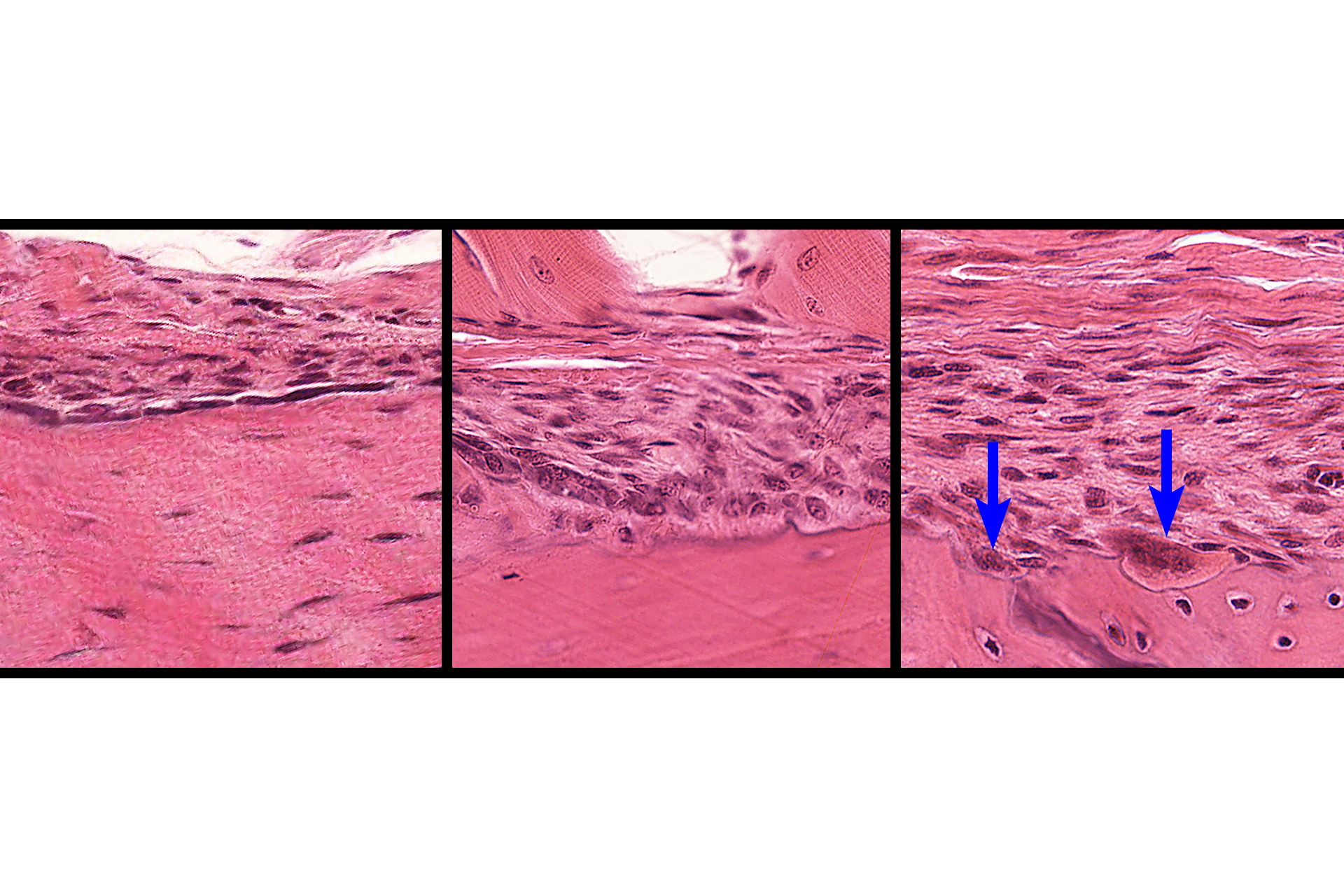
Bone: the organ - periosteum and endosteum
These images show the surface coverings of bone. The outer surface (top image) is covered by a periosteum, the inner surface (bottom image) is lined by endosteum. A low magnification, cross section of the diaphysis is shown in the inset. 10x, 800x, 800x.

Periosteum >
Periosteum covers the outer surface of bones, except over articular cartilages. The periosteum consists of an outer fibrous layer of dense connective tissue and an inner osteogenic layer. Bone lining cells in the inner layer are squamous-shaped and include osteoprogenitor cells that are capable of differentiating into bone forming osteoblasts. The osteogenic layer varies considerably depending on its functional state, reflecting regions of relative inactivity, bone deposition, or bone resorption and remodeling. The periosteum is well vascularized and innervated.

- Fibrous layer
Periosteum covers the outer surface of bones, except over articular cartilages. The periosteum consists of an outer fibrous layer of dense connective tissue and an inner osteogenic layer. Bone lining cells in the inner layer are squamous-shaped and include osteoprogenitor cells that are capable of differentiating into bone forming osteoblasts. The osteogenic layer varies considerably depending on its functional state, reflecting regions of relative inactivity, bone deposition, or bone resorption and remodeling. The periosteum is well vascularized and innervated.

- Osteogenic layer
Periosteum covers the outer surface of bones, except over articular cartilages. The periosteum consists of an outer fibrous layer of dense connective tissue and an inner osteogenic layer. Bone lining cells in the inner layer are squamous-shaped and include osteoprogenitor cells that are capable of differentiating into bone forming osteoblasts. The osteogenic layer varies considerably depending on its functional state, reflecting regions of relative inactivity, bone deposition, or bone resorption and remodeling. The periosteum is well vascularized and innervated.

-- Bone lining cells
Periosteum covers the outer surface of bones, except over articular cartilages. The periosteum consists of an outer fibrous layer of dense connective tissue and an inner osteogenic layer. Bone lining cells in the inner layer are squamous-shaped and include osteoprogenitor cells that are capable of differentiating into bone forming osteoblasts. The osteogenic layer varies considerably depending on its functional state, reflecting regions of relative inactivity, bone deposition, or bone resorption and remodeling. The periosteum is well vascularized and innervated.

Compact bone
Periosteum covers the outer surface of bones, except over articular cartilages. The periosteum consists of an outer fibrous layer of dense connective tissue and an inner osteogenic layer. Bone lining cells in the inner layer are squamous-shaped and include osteoprogenitor cells that are capable of differentiating into bone forming osteoblasts. The osteogenic layer varies considerably depending on its functional state, reflecting regions of relative inactivity, bone deposition, or bone resorption and remodeling. The periosteum is well vascularized and innervated.

Endosteum >
The endosteum consists of single layer of squamous-shaped bone lining cells and osteoprogenitor cells. Endosteum covers all internal bone surfaces (including spicules of spongy bone), and extends into Haversian and Volkmann’s canals. In areas of active bone deposition, cuboidal osteoblasts are present; areas of bone resorption are marked by the presence of osteoclasts.

- Bone lining cells
The endosteum consists of single layer of squamous-shaped bone lining cells and osteoprogenitor cells. Endosteum covers all internal bone surfaces (including spicules of spongy bone), and extends into Haversian and Volkmann’s canals. In areas of active bone deposition, cuboidal osteoblasts are present; areas of bone resorption are marked by the presence of osteoclasts.

Compact bone
The endosteum consists of single layer of squamous-shaped bone lining cells and osteoprogenitor cells. Endosteum covers all internal bone surfaces (including spicules of spongy bone), and extends into Haversian and Volkmann’s canals. In areas of active bone deposition, cuboidal osteoblasts are present; areas of bone resorption are marked by the presence of osteoclasts.

Marrow
The endosteum consists of single layer of squamous-shaped bone lining cells and osteoprogenitor cells. Endosteum covers all internal bone surfaces (including spicules of spongy bone), and extends into Haversian and Volkmann’s canals. In areas of active bone deposition, cuboidal osteoblasts are present; areas of bone resorption are marked by the presence of osteoclasts.

Cells of the endosteum and periosteum >
In non-active regions of both periosteum and endosteum, bone lining cells are most prevalent (left panel). These cells also include osteoprogenitor cells. In areas of active bone deposition (center panel), cuboidal osteoblasts are present; areas of bone resorption (right panel) are marked by the presence of osteoclasts (arrows).